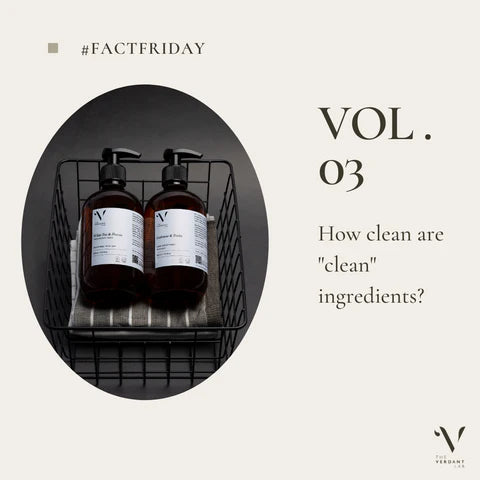You've seen the labels online and in stores, brands touting that their products only use ‘clean ingredients’. Clean ingredients and products are definitely on the rise and it is expected to hit $24 billion dollars (USD) in sales by 2024. However, have you stopped to wonder what exactly are ‘clean’ ingredients?

Firstly, you need to know that there is no legal or official definition for what constitutes a clean ingredient. As a result, many brands have their own set of definitions, which varies based on their agenda. Sounds fishy? Let’s dig in.
Clean beauty is a rationale and holistic approach to product development that is focused on using ingredients that are safe, effective, ethically produced, environmentally friendly and sustainable. Clean ingredients are chosen as ‘clean’ because of their safety and performance, not whether they are natural or synthetic. Sounds good so far? Unfortunately, while the idea of clean beauty sounds good in principle, many of the brands that market themselves as clean do not live up to their promises and their products are poorly formulated. Ingredients that are deemed ‘unclean’ are not based on scientific data but on the opinions of individuals who want to best serve the agenda of their brand.
To further emphasise this point, the major players in the clean industry have different and overlapping ingredients on their ‘clean’ and ‘dirty’ lists. For example, brands such as Tatcha and Drunk Elephant have Sephora’s clean seal but their products contain ingredients that are restricted on Credo’s and Follian’s lists (Follian and Credo are clean-only beauty retailers in the US).
Additionally, experts like Curtis Klassen (toxicologist), say that there is a disconnect between the information widely circulated by clean beauty supporters and scientific fact. When assessing the safety of an ingredient, it is paramount to consider the dosage. While it is true that some ingredients can be dangerous in very high concentrations, the low doses found in personal care products do no harm. Think of it in the same way that tsunamis kill, but a gentle wave will not. Furthermore, there is no scientific evidence to support claims that the cumulative and constant exposure to such ingredients daily can be toxic. Klassen further adds that “the margin of safety is so high that even using 5 or 6 products with the same chemicals daily is not going to cause a problem”.
So why then, are brands still actively pushing and promoting their products as ‘clean’? The reason is simple. The personal care/beauty industry is a consumer-facing business. It is driven by what consumers want to see and use. The reality is that if products and ingredients are not perceived as clean and safe, it will be harder and harder for brands to get traction. As long as clean ingredients are in trend and continue to grow and take up a bigger part of the industry, brands will constantly push their products as ‘clean’ and consumers will clamour to soak it all up.
Consumers can help the industry self-regulate by being ‘woke’ about the ingredients used and determine how ‘harmful’ these ingredients actually are for yourself. Instead of relying on the brands to tell you that the ingredients they have omitted are ‘harmful’, consumers can get information about said ingredients on the internet from trusted scientific sources such as the Cosmetic Ingredient Review (CIR).
In conclusion, do not blindly believe the hype by brands advertising their products as ‘clean’. Instead, do your own research of the ingredients used and draw your own conclusions on whether the product is safe and clean for your own use.
That’s the end of our blog post for today! We hope that it has given you an insight into how ‘clean’ certain ingredients and products are. Please feel free to let us know what topic you would like to see us cover next in the future!

